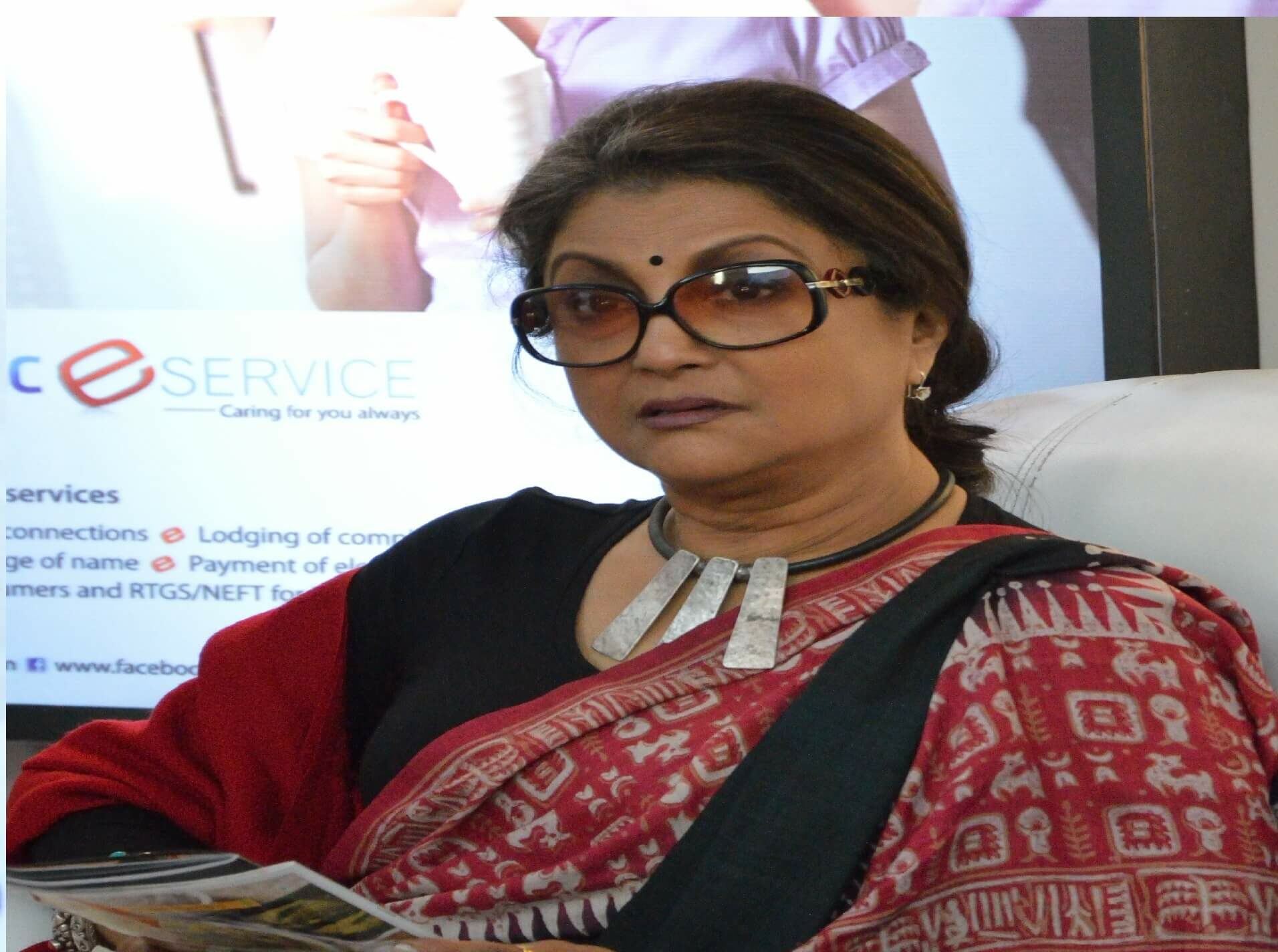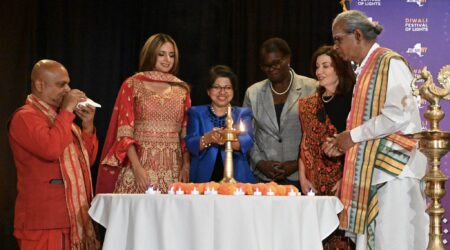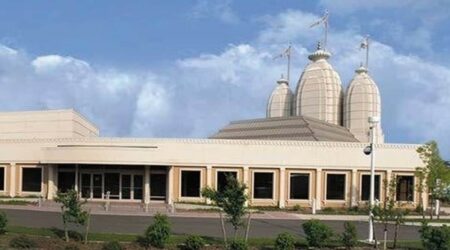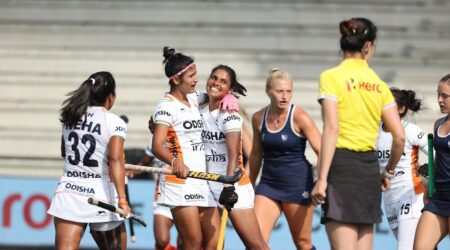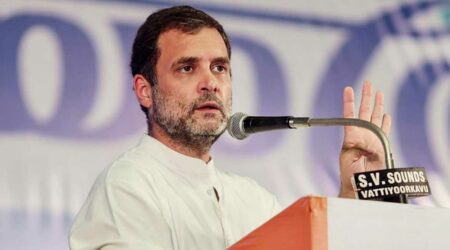Suchitra, Aparna and Nandana have left their major marks in the history of Bengali as well as Indian cinema.
By Basab Dasgupta
I was recently reading about a book titled “The Three Khans – And the Emergence of New India” written by journalist and author Kaveree Bamzai. It details the emergence of three superstars of Bollywood – Salman, Shah Rukh and Aamir — and their influence on the younger Indian generation and examines correlation of this influence with the social/political events in the country.
Being born and brought up in Kolkata, I immediately started to think if there is a similar correlation between last names of famous Bengali actors and any social phenomena. I was overwhelmed by the number of famous Bengali male actors with the last name Chatterjee: Soumitra, Arun (aka Uttam Kumar), Anil, Biswajeet, Tarun, Abir, Dhritiman, Saswata, Priyansu, Parambrata and many more. Next, I looked at the actresses. Here I discovered three very famous actresses, all with the last name Sen – Suchitra, Aparna and Nandana who have left their major marks in the history of Bengali cinema. However, one significant difference with the Khans is that the Khans all rose to fame at about the same time. These Bengali ladies appeared on the movie screen at three almost non-overlapping periods and spanned three generations.
Let me start with Suchitra Sen who was a favorite of my mother. Dubbed “mahanayika” (the great heroine), she was the epitome of classic beauty and grace. Her looks were stunning, behavior reserved and she always projected a strong personality. She teamed up with Uttam Kumar in many hit movies and created the so-called “golden era” of Bengali movies. Some of her most noteworthy movies with Uttam Kumar were “Share Chuattor”, “Bipasha”, “Treejama”, “Saptapadi”, “Indrani” and “Harano Sur”. She was also memorable in “Saat Panke Bandha” against Soumitra and in “Deep Jele Jaai” with Basanta Chowdhuri as co-star. She won the top award of best actress in the 1963 Moscow International Film festival for her role in Saat Panke Bandha – first such international honor for an Indian actress. She moved on to Bollywood and starred in several Hindi movies.
Although reserved in nature, Suchitra had a playful side which was endearing to her fans. For example, I still love her in the song “ei path jodi na sesh hoi” from the movie “Saptapadi” and in the Hindi movie “Bombai Ka Babu” singing “dekhneme bhola hai”. She was a versatile actress, capable of playing different characters and displaying all kinds of emotions. She demonstrated in the movie “Mamta” that she could do a mujra just as good as any Bollywood actress. I feel that she was underrated in Bollywood in spite of being in blockbuster hits like ‘Devdas”, “Mamta”, “Bombai Ka Babu” and “Aandhi”.
Unfortunately, Suchitra Sen’s personal life was not as happy. There were always rumors of emotional abuse by her husband Dibanath Sen and she became a widow at a young age of 39. She never remarried and went into virtual seclusion. There was no speculation about any extra-marital scandal, nor about her romantic life after she became a widow. Her only daughter, Munmun Sen, followed in her mother’s footsteps but was not as successful as a film star and her interests diverted to other areas such as politics, writing cookbooks, etc.
Suchitra Sen symbolized ideal traits for all young women in the fifties and early sixties to emulate: grace, independence, romantic appeal, moral values and dignity, passion and dedication to one’s profession and motherly love.

Suchitra Sen in Bimal Roy’s Devdas (1955). Dubbed “mahanayika”, she was the epitome of classic beauty and grace.
Aparna Sen belongs to my generation and was my batchmate at Presidency College. She is very photogenic and has a somewhat innocent look. From her early movies like “Baksho Badal”, “Basanta Bilap”, “Sujata”, “Alor Thikana”, she established herself as a leading actress of Bengali movies. Like Suchitra Sen, she also moved on to Bollywood and appeared in a few Hindi movies. I liked her a lot opposite Jeetendra in “Vishwas”.
Aparna’s real talent and creativity came out when she started to direct movies. When I saw movies directed by her, a comparison with the great director Satyajit Ray became inevitable. Not surprising considering that Mr. Ray was a good friend of Aparna’s father, Chidananda Dasgupta, a filmmaker in his own right who influenced her. I was especially impressed by “Paramitar ek din” where she also played the lead role. Other notable movies directed by her include “Mr. and Mrs. Iyer”, “36 Chowringhee Lane”, “Iti Mrinalini”, “Goynar Baksha” and “15 Park Avenue”.
Aparna showed the way whereby a woman can do much more than just acting in the entertainment world by taking control through directing and writing the screenplays. She also focused on contemporary Kolkata and related issues, and was not afraid to depict controversial subjects. An example is the movie “Paroma”, which deals with the extramarital affair of a Bengali woman – a taboo subject. Even in her real life, Aparna was not bound by traditional customs as evidenced by her three marriages.
Aparna Sen’s qualities are creativity, leadership, business acumen, literary talent and interest in a wide variety of subjects. She is the perfect modern woman. Both Aparna and Suchitra Sen have been honored with Padma Shri award by the Indian government for their contribution to Indian cinema.

Daughter of a Nobel laureate, Nandana Sen has made movies in multiple languages, opting for off-beat and challenging roles.
Nandana Sen is for the future generation of women. She is highly educated (a graduate of Harvard University), fiercely independent and an activist for women’s causes. Her beauty is unique with a mixture of sharp features, big eyes and sex appeal. She appears to be selective in roles to play. She appeared in only 20 movies, only two of which are in Bengali, compared to 60 by Suchitra Sen. She made movies in multiple languages, opting for off-beat and challenging roles, such as that of a vulnerable teenager or a woman fleeing from law or a muse for an artist. Her most notable movies include “Autograph” in Bengali, “The Doll/Gudiya”, “Black”, “Rang Rasiya” (in Hindi).
Nandana is not afraid to show her body if the movie script calls for it. Her nude appearance in “Rang Rasiya” was unthinkable in Indian movies until then but at the same time it was a spell-binding scene which was tastefully done. It is worth quoting her in this context: “My body is as much a part of my humanity as my brain, my morals, and my heart, and I will never be ashamed of expressing it with the dignity and self-respect it deserves”.
Nandana Sen showed that she did not need to bank on her Nobel laureate father’s name (Amartya Sen) to find fame and fortune. She is also not a slave to the film industry and has many other interests such as writing children’s books and campaigning against child-trafficking.
She is the perfect role model for the young generation with her education, involvement in social causes, international flavor in her upbringing and interests, having strong opinions and yet finding happiness with a quiet domestic life. She has been married to John Makinson, Chairman of Penguin Random House, since 2013 and has adopted a young Bengali girl. She is the kind of woman who can bring social changes, not just by talking but by setting examples. I would be delighted if my own daughter turns out to be just like her.
There are other Khans in Bollywood and likewise there are other women with the last name Sen (most notably Aparna’s daughter Konkona Sen), but Suchitra, Aparna and Nandana are pioneering women in Indian movies who also represent the essence of what is good in three generations of Bengali women. I salute them all.

Basab Dasgupta has a doctorate in physics from University of Wisconsin and worked with Sony as Vice President of an operating division. Retired, he now lives in San Clemente, CA.


